Search Thermo Fisher Scientific
Invitrogen
Donkey anti-Goat IgG (H+L) Highly Cross-Adsorbed Secondary Antibody, Alexa Fluor™ Plus 594
图: 1 / 7
Goat IgG (H+L) Highly Cross-Adsorbed Secondary Antibody (A32758) in ICC/IF
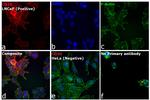
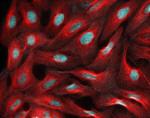
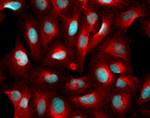
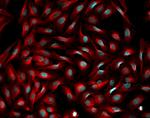
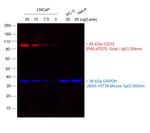
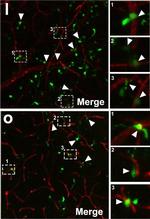
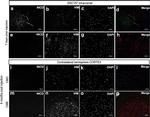
产品信息
A32758
免疫印迹 (WB)
免疫细胞化学 (ICC/IF)
种属反应
宿主/亚型
分类
类型
抗原
偶联物
激发/发射光谱
形式
浓度
纯化类型
保存液
内含物
保存条件
运输条件
RRID
靶标
交叉吸附
抗体形式
产品详细信息
To minimize cross-reactivity, the donkey anti-goat IgG whole antibodies have been cross-adsorbed against IgG from human, mouse, rabbit, and rat, as well as non-immunoglobulin goat serum. Cross-adsorption or pre-adsorption is a purification step to increase specificity of the antibody resulting in less background staining and cross-reactivity. The secondary antibody solution is passed through a column matrix containing immobilized serum proteins from potentially cross-reactive species. Only the nonspecific-binding secondary antibodies are captured in the column, and the highly specific secondaries flow through. Further passages through additional columns result in highly cross-adsorbed preparations of secondary antibody. The benefits of these extra steps are apparent in multiplexing/multicolor-staining experiments where there is potential cross-reactivity with other primary antibodies or in tissue/cell fluorescent staining experiments where there may be the presence of endogenous immunoglobulins.
Using conjugate solutions: Centrifuge the protein conjugate solution briefly in a microcentrifuge before use; add only the supernatant to the experiment. This step will help eliminate any protein aggregates that may have formed during storage, thereby reducing nonspecific background staining. Because staining protocols vary with application, the appropriate dilution of antibody should be determined empirically.
Specificity: This antibody binds to heavy chains on goat IgG and light chains on all goat immunoglobulins. This antibody does not bind non-immunoglobulin goat serum proteins or IgG from human, mouse, rabbit or rat.
靶标信息
Anti-Goat secondary antibodies are affinity-purified antibodies with well-characterized specificity for goat immunoglobulins and are useful in the detection, sorting or purification of its specified target. Secondary antibodies offer increased versatility enabling users to use many detection systems (e.g. HRP, AP, fluorescence). They can also provide greater sensitivity through signal amplification as multiple secondary antibodies can bind to a single primary antibody. Most commonly, secondary antibodies are generated by immunizing the host animal with a pooled population of immunoglobulins from the target species and can be further purified and modified (i.e. immunoaffinity chromatography, antibody fragmentation, label conjugation, etc.) to generate highly specific reagents.
仅用于科研。不用于诊断过程。未经明确授权不得转售。




